Ft. Baker Back on Track for 2023 Releases
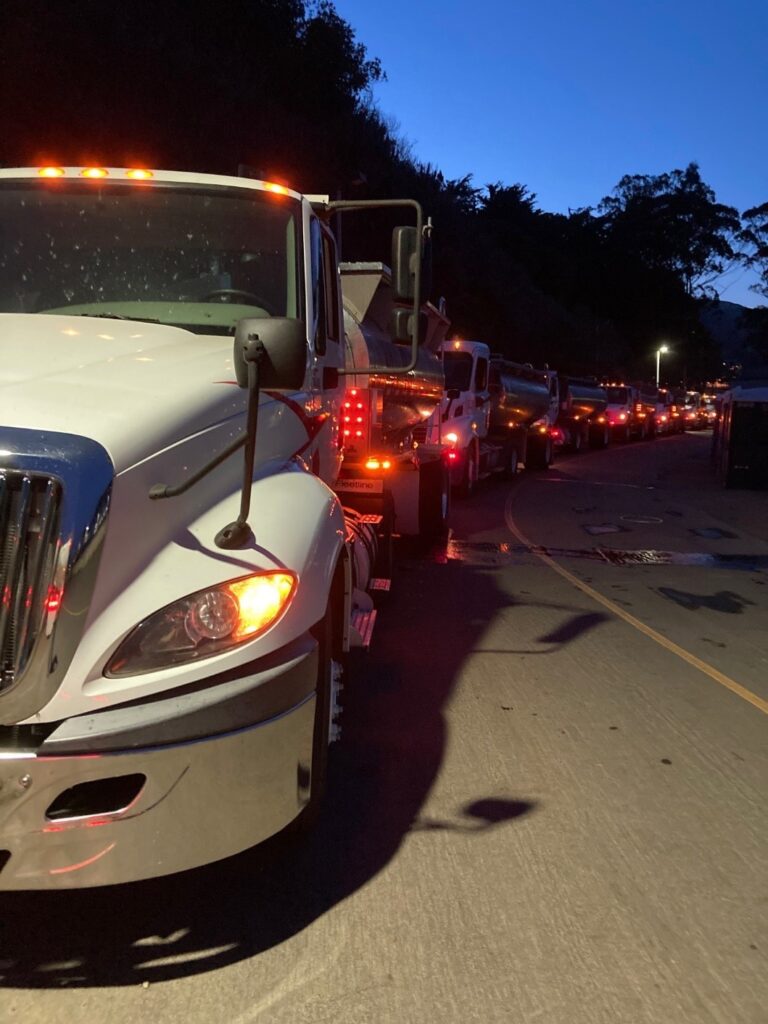
CDFW officials report that progress has been made in negotiations with the National Park Service regarding salmon releases at Sausalito’s Ft. Baker. State officials are cautiously optimistic that releases will resume in the spring of 2023 under a new five-year permit. The Park Service, which administers the area as part of the Golden Gate National Recreation Area, is considering a state proposal to cap annual releases there at two million fish except in drought conditions when releases might rise to four million. About four million fish were released there in 2022 and 2021 after GSSA worked with Congressional allies to stress the importance of these releases to the Park Service. The site is critical because survival of these fish is two to four times higher than those released at other Bay release sites. This is due to its proximity to the ocean, releases being done at night on outgoing tide to reduce bird predation and get the fish to sea ASAP, and other factors. Earlier reports suggesting that no more releases would occur there were based on premature analysis of the negotiations and poorly communicated information about the status of the talks. GSSA double checked some of the early reports and agreed to work with CDFW to support successful negotiations towards renewing the release permit.
Season Update

What started as a really good ocean season somewhat petered out in August after the big salmon school off the coast moved north to waters off Mendocino County. Exactly why is not certain. As of mid September there hadn’t been the big catches off the Sonoma or Marin coasts that would be expected this time of year. There were some okay sport catches off the San Mateo coast through August, which coincided with the big algae bloom in SF Bay, and some have speculated the two could be connected. More on this is written below. Returns to the Central Valley were unknown but appeared to be low. Adult salmon have been seen floating dead from the hot water and river fishermen reported very poor fishing. More on this below.
Central Valley River Water Temps, Pre Spawn Mortality Reported
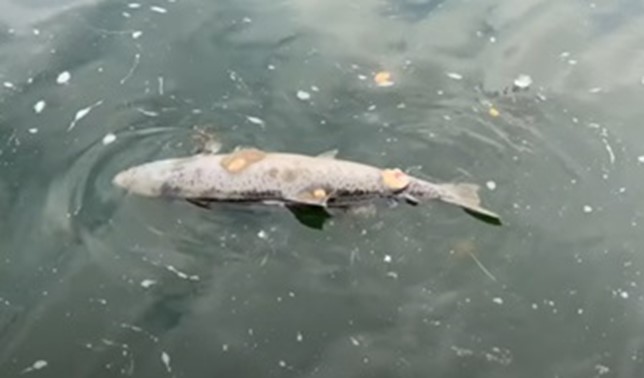
As GSSA warned throughout the spring, Central Valley rivers got warm this summer and the hot water is proving lethal to spawning salmon. Some adult salmon died prior to spawning from the heat stress. Others have laid eggs that have died in the gravel from heat. Much more of this is expected in the weeks to come. Temperatures greeting adult salmon returning to the American River in mid-September were in the mid 60-degree range, about ten degrees warmer than what’s needed by incubating salmon eggs. The upper Sacramento was 58 degrees, four degrees hotter than what salmon eggs need. Deer, Mill and Butte Creek were all in the 70’s, lethal to the remnant spring run salmon there. Water going into the Livingston Stone winter run hatchery, located at the base of Shasta Dam, was first run through refrigeration chillers. So too was water at the Nimbus hatchery on the American River. The lower Sacramento River, near the Delta, was in the low 70’s which stresses adult salmon trying to swim through that water.
Earlier this year GSSA took action, with allies, to get the state to issue orders that would have averted these losses but ultimately, the state chose to largely ignore us. We reported on the tug of war last spring for limited water resources this year and GSSA’s role in securing enough for salmon.
This year’s hot water salmon losses follow similar losses in the last two years, and we could see another if dry conditions persist into 2023. That’s why GSSA is pressing court challenges to existing rules to stop the salmon carnage. GSSA welcomes any and all salmon advocates, fresh or saltwater, to help in this work to make our rivers livable again for salmon.
Newsom’s Involuntary Agreements Harm Salmon
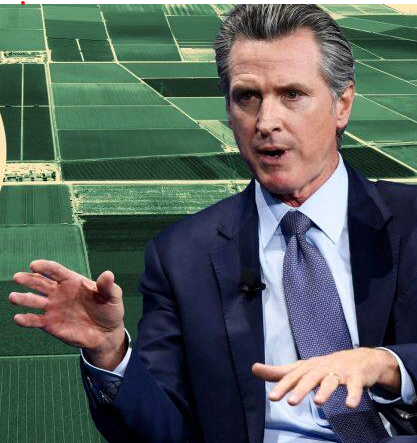
The governor’s office is giving away the store to every water district that diverts from Central Valley rivers to get them to sign on to a plan that largely preserve status quo ag water diversions. State officials are pulling out the stops to get more signatures on a memo addressing the future of water management on Central Valley salmon rivers. No surprise, salmon come in last in this scheme. Since the terms being offered are loose, the documents are considered early drafts and nothing is legally committed to at this point. The governor’s aim is to keep the State Water Resources Control Board from imposing stricter water diversion rules on the big water users, most of which are agricultural entities (80% of California’s captured water is used by ag). GSSA has worked to educate state and federal politicians about what’s really going on. So far, the state legislature has largely refused requests from the governor’s office to provide taxpayer money to sweeten the deals he’s offering. If the memo being signed is ever legally implemented, it will almost certainly be challenged in court. Meanwhile, the memo signing is stalling any needed water reforms and locking in more or less status quo diversions, which are bad for salmon.
SF Bay Algae Bloom, Harm Salmon?

Most people saw the widespread reporting on the algae bloom that covered much of San Francisco Bay in late August and early September. The exact causes are to be determined and no doubt multiple factors contributed. Much of the reporting mentioned treated sewage that is dumped into the bay as a source of the problem. But the discharge of treated sewage is nothing new, so what was different this year that created this bloom? The bloom coincided with very low volumes of freshwater flowing to the Bay from the Central Valley rivers. Both the Sacramento and San Joaquin rivers are little more than trickles due to drought and upstream water diversions. In addition, the Bay Area saw some very hot temperatures. The algae killed sturgeon and other fish in the bay, apparently by robbing them of the dissolved oxygen normally in the water. How, if at all, did this affect returning adult salmon? No one knows for sure but the algae also coincided with what appeared to be a low number of adult salmon caught off the Marin coast and a higher than normal number (for this time of year) caught off the San Mateo coast. Some speculated that distribution of the algae outside the Golden Gate may have flowed more to the north due to nearshore ocean currents and caused returning fish to circumvent it and come in from the south. Likely we’ll never know for sure and we hope we don’t see or experience this again.
DWR and CDFW Contemplating Baby Steps Towards Reintroducing Salmon to the Upper Feather River above Oroville
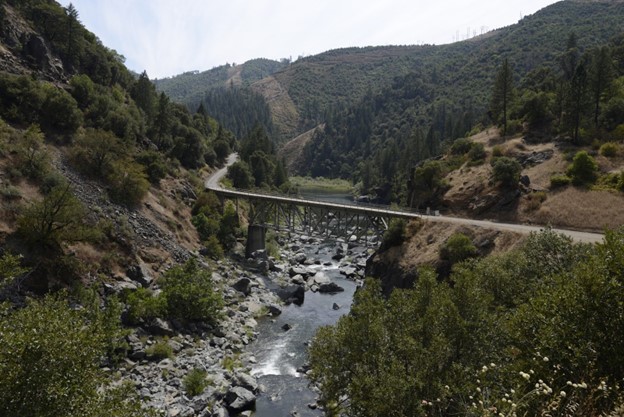
Officials from CDFW and the state’s Department of Water Resources (DWR) are investigating reintroducing salmon above Oroville Dam. The North fork of the Feather River is believed to have good spawning and rearing habitat conditions for salmon. State officials are approaching the idea of moving adult salmon into the upper Feather very cautiously and insisting on various studies before any salmon might eventually get moved. Among other concerns, they worry that moving adult salmon upstream of Oroville Dam might introduce pathogens into the upstream waters. This could potentially infect waters used to supply the Feather River hatchery downstream. Such pathogens can be filtered out with expensive water treatment facilities, such as the one on Battle Creek that treats water supplying the Coleman hatchery. Another question is how juvenile salmon born in the North Fork Feather be captured and transported downstream to release sites below Oroville dam. Traps exist on other rivers addressing this issue, some version should work here.
One takeaway is that at least state officials are considering the eventual need to move fish above the dams since waters downstream are becoming more hostile to salmon as time goes on.
Spring Run Status Review, Hinges on NMFS Finding of Butte Creek Population Status
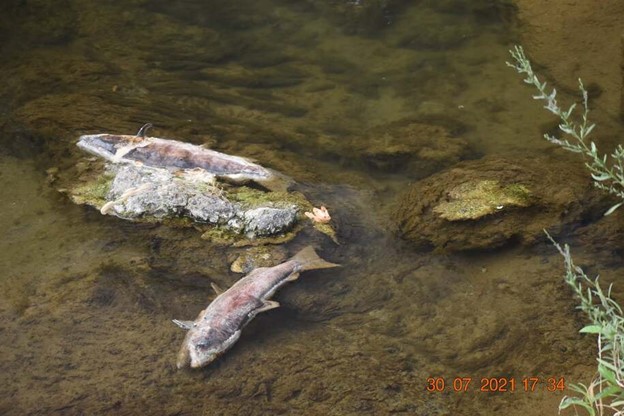
The National Marine Fisheries Service (NMFS) hasn’t yet concluded its five-year status review of Central Valley spring run salmon to see if they warrant more protection. Springers are currently listed as threatened under the federal Endangered Species Act. The ESA requires listed species to be reviewed every five years. Springers could be “up listed” to endangered, retain their current status as threatened, or be down-listed as recovered, something extremely unlikely in this case. NMFS recently said the decision is likely to rest on a study looking at the health of the main surviving population in Butte Creek. If NMFS decides to up list springers to endangered status, that could spell additional restrictions on fishing, both in the ocean and river. Even if they find the threatened listing is still warranted, we could be seeing changes coming to ocean fishing to further protect spring run. That’s because fishery managers used to consider time and area restrictions put in place to protect winter run as also providing protection for spring run. Due to changes in how many winter run are now being bred in hatcheries, fishery managers are no longer certain they are an accurate surrogate for springers..
Spring run were once the most numerous salmon in the Central Valley. The construction of the Friant Dam and other diversions on the San Joaquin River drove spring run, numbered in the hundreds of thousands, into extinction. The big San Joaquin Valley ag interests responsible think Friant Dam was a good thing for the state. We’d beg to differ.
Thiamine Deficiency May Be Triggered by Bad River Conditions
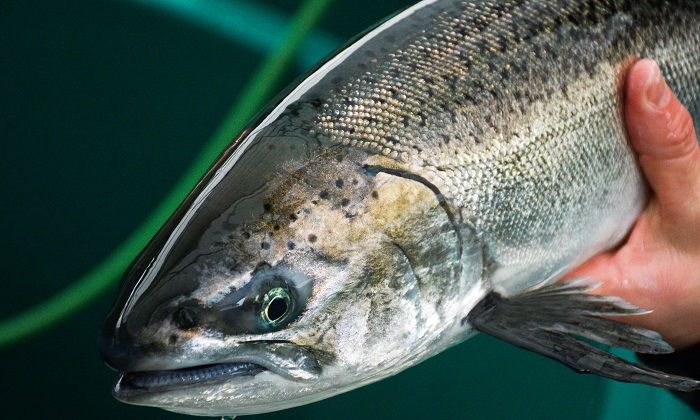
A deficiency of a natural vitamin, Thiamine, in salmon has greatly hurt their reproductive success in recent years. Eggs hatch into unhealthy fry that die. Hatchery managers discovered the problem a few years ago and developed a way to address the issue in hatchery fish. Fish attempting to spawn in the wild haven’t been so lucky. The assumed death of many or most juvenile salmon spawned in natural areas, coupled with river water too warm to safely hatch eggs, has left us in recent years mostly reliant on hatchery salmon to supply the fishery.
Until recently it was believed that the lack of thiamine was due to the salmon eating too many anchovies and not enough other items. Anchovies are known to bio accumulate a substance that neutralizes or destroys thiamine.
However, recent research is showing that salmon, while in the ocean, don’t appear to be showing thiamine deficiency at a high rate and that they may be developing the problem only after returning to spawn in freshwater. There are also indications that not all rivers appear to be inducing the problem equally, some may be worse than others.
One hypothesis that is being investigated is whether poor river conditions, with low, hot flows, are stressing the fish to the point where they’re burning up whatever thiamine reserves they might have.
Drought or No Drought, Almond Orchards Grow in Leaps and Bounds

Despite years of intense drought in California marked by the collapse of Delta smelt and salmon populations, the state’s almond acreage exploded by nearly 78 percent from 2010 to 2022, according to new research by Food & Water Watch.
Between 2017 and 2021, almond bearing acres grew by 32 percent and pistachio acres increased by 63 percent, according to the new report.
“That expansion necessitated the withdrawal of an extra 523 billion gallons of water for irrigation — enough water to supply nearly four million households with enough water for an entire year. In a megadrought where small farmers and households are struggling to survive, those numbers are sobering,” the group said.
Almond and pistachio orchards are permanent and need to be watered year-round, which is becoming increasingly difficult with limited water resources.
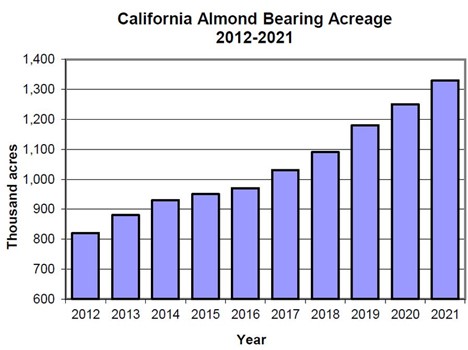
The report disclosed the following in almond and pistachio acreage trends:
● The USDA estimates 1,640,000 acres of land were dedicated to water-hungry almonds in 2021 in California.
● According to 2021 USDA data, 409,000 acres were pistachio bearing acres – a 64 percent increase in bearing acres compared to 2017.
● Total almond and pistachio bearing and non-bearing acres in 2021 amounted to more than 2,700 square miles.
Salmon Advocate and Scientist, Jon Rosenfield, Opens up on Website Read by State and Federal Agencies and AG Water Districts
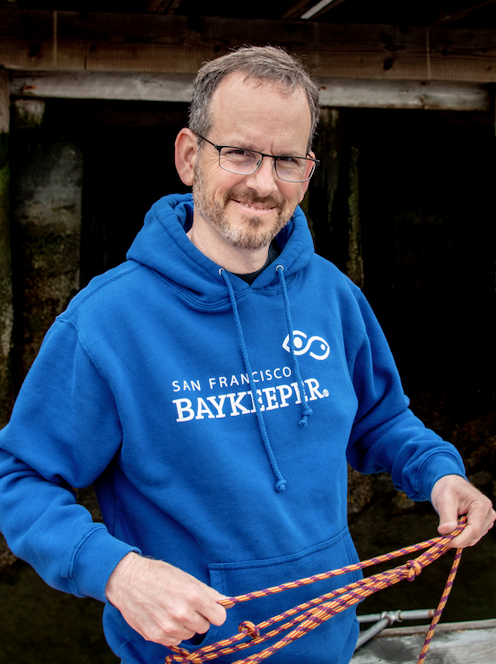
Asked what the biggest issue is facing the Delta and what should the state be doing about it, Rosenfield said:
The biggest threat to the Delta ecosystem is the unsustainable diversion of river flows both upstream and from the Delta itself. We need updated, science-based, water quality standards that protect native fish and wildlife species, and the people who rely on and enjoy a vibrant San Francisco Bay estuary, which includes the Delta.
Read more here.
Join GSSA at These Upcoming Events for Chances to Win Fun Gear, Trips, and Swag
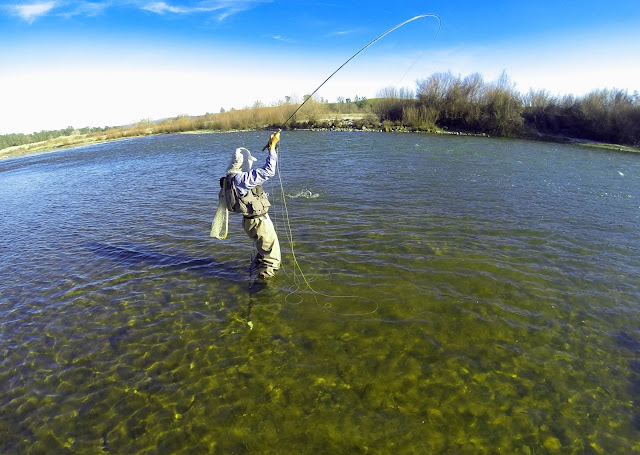
YubaFest 2022 with Fly Fishers International, CalTrout, Trout Unlimited, and others. Saturday, Oct. 15th 2022
International Sportsman Expo (ISE), Sacramento, Jan. 19th-22nd
GSSA Crab Feed, Feb. 11, Marin Rod and Gun Club, Details and tickets coming soon.
Peal of Wisdom to Leave You With
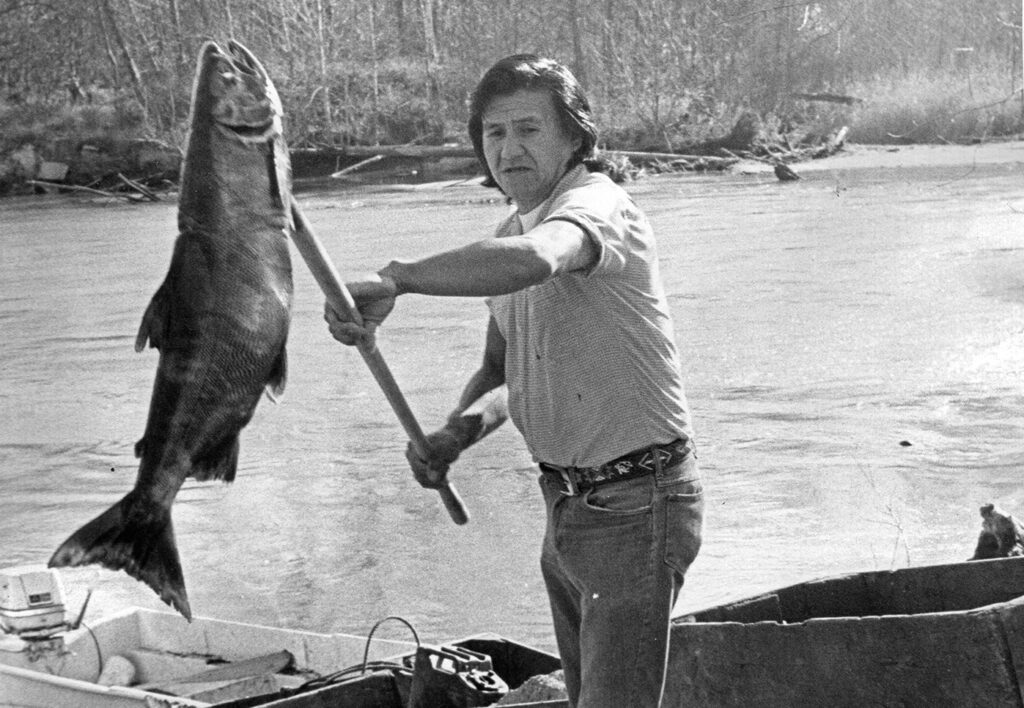
“Those who learn to listen to the world that sustains them can hear the message brought forth by the salmon. “
Billy Frank Jr.
Nisqually Tribal leader. The Nisqually River originates on the slopes of Washington’s Mt. Rainer.
Renew Your Membership

If you haven’t done so already, please consider renewing your membership at $35 for the coming year. We have a lot of work ahead and can’t do it without member support to keep the lights on and the staff working. If you feel like providing more support, check out the higher membership categories available.
There’s a lot of work unfinished and a lot of work ahead. Thanks for your support, as always. You can renew online or mail a check in to:
P.O. Box 320096
San Francisco, CA
84132
